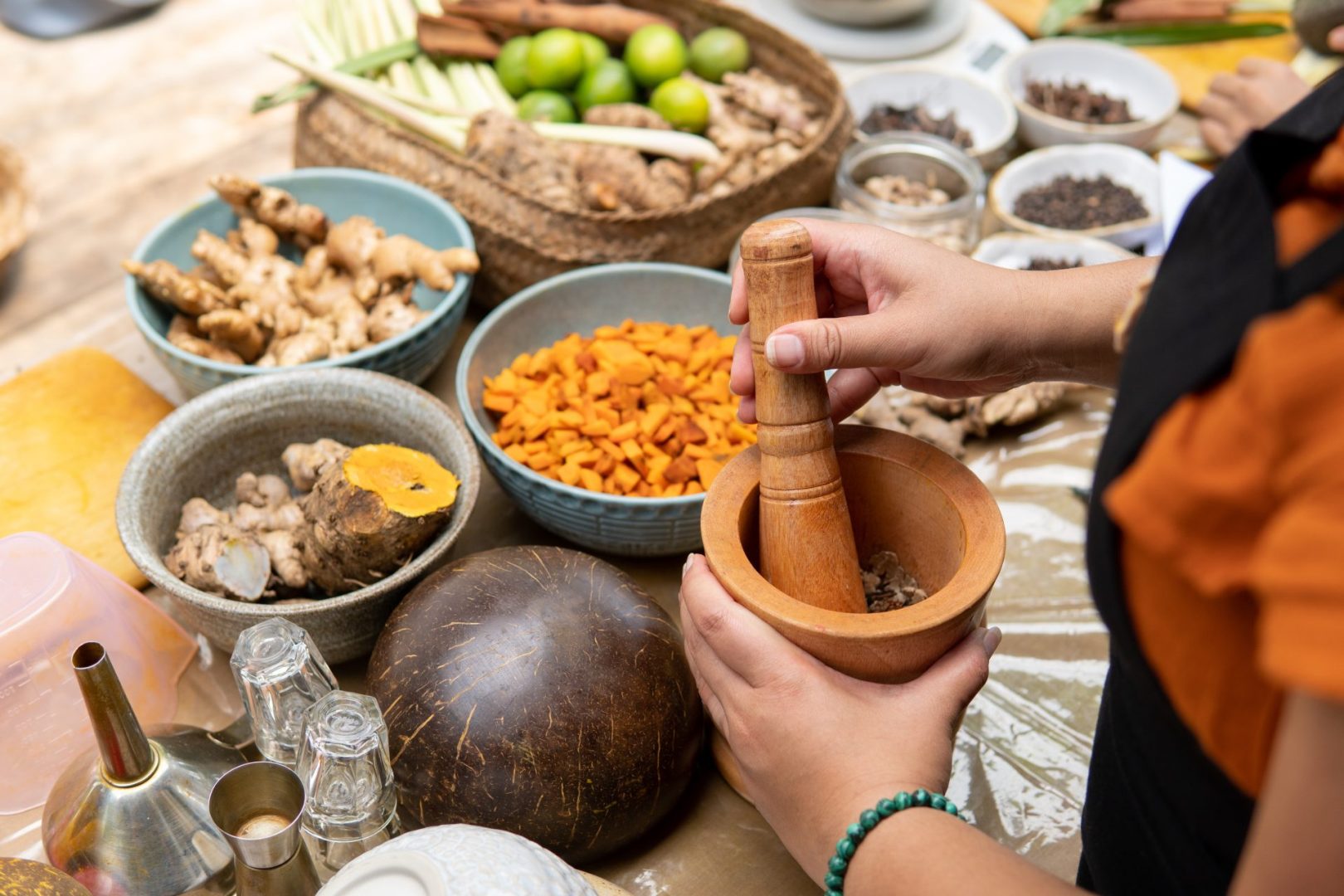That spice cabinet might hold more power than you think. Tucked between your cinnamon and turmeric could be natural compounds that help your body process sugar almost like your pancreas does. But not all herbal remedies deserve the health halo they’re often given. Some popular options might actually mess with your medications or worsen your condition.
The blood sugar balancing act
Your body performs an incredible balancing act with blood sugar every time you eat. When working properly, your pancreas releases insulin to help cells absorb glucose from your bloodstream. Without enough insulin or when cells don’t respond to it properly, blood sugar levels rise, potentially leading to prediabetes or type 2 diabetes.
While no herb can replace prescribed medication, certain plants contain compounds that work in surprisingly similar ways to insulin or help your body use its own insulin more effectively.
Herbal insulin mimickers with research backing
Nature has provided several plants that can help regulate blood sugar levels. These aren’t miracle cures, but they might be helpful additions to proper medical care and lifestyle changes.
Berberine tops the list of impressive natural compounds. Found in plants like barberry and Oregon grape, this bitter-tasting compound activates an enzyme called AMPK that helps cells take in glucose. Some studies show it can lower blood sugar nearly as effectively as metformin, a common diabetes medication. It works by multiple mechanisms, including reducing glucose production in your liver and helping your body respond better to its own insulin.
Cinnamon brings more to the table than just flavor. The compounds in cinnamon bark can mimic insulin, activate insulin receptors, and increase glucose uptake into cells. Not all cinnamon is created equal, though. Ceylon cinnamon is generally considered safer for regular consumption than the more common cassia variety.
Fenugreek seeds slow carbohydrate digestion thanks to their high fiber content and help improve insulin sensitivity. The amino acid 4-hydroxyisoleucine in fenugreek stimulates insulin release when glucose is present. People have used this spice for centuries in Middle Eastern and Indian cooking, and now science is catching up to traditional wisdom.
Bitter melon contains several compounds that work together to help move glucose into your cells. It activates the AMPK pathway like berberine and has insulin-like peptides called polypeptide-p. While it tastes exactly like its name suggests, this vegetable has shown promising results for blood sugar management in several studies.
Gymnema sylvestre blocks sugar receptors on your taste buds temporarily but also contains gymnemic acids that may help regenerate insulin-producing cells. This herb has been used in Ayurvedic medicine for centuries with the Hindi name “gurmar,” literally meaning “sugar destroyer.”
Banaba leaf contains corosolic acid, which improves glucose transport into cells. It appears to work similarly to insulin by activating glucose transporters. This plant has been used traditionally in the Philippines and continues to show promise in research settings.
Proceed with caution
Just because something grows from the ground doesn’t automatically make it safe. Some herbs can interact with medications or even worsen certain conditions.
Ginseng might help lower blood sugar, but this effect can be unpredictable. Different types of ginseng and different preparations can have varying effects on blood glucose levels. This makes it risky to use alongside diabetes medications without careful monitoring, as it could potentially cause dangerous drops in blood sugar.
Aloe vera juice has shown some blood sugar-lowering effects, but quality and concentration vary widely between products. More concerning, it can interact with several medications and may cause dangerous electrolyte imbalances when consumed orally in large amounts.
Garlic supplements can enhance the effect of certain diabetes medications, potentially leading to hypoglycemia. While cooking with garlic is generally safe, concentrated supplements taken alongside blood sugar medications require medical supervision.
St. John’s Wort doesn’t directly affect blood sugar, but it’s notorious for interfering with many medications, including some used for diabetes. This herb can affect how quickly your liver processes drugs, making them less effective.
Ginger in food amounts is perfectly safe for most people with diabetes, but concentrated supplements might increase the risk of hypoglycemia when combined with diabetes medications. The blood-thinning effects also make it risky before surgery.
Smart ways to incorporate beneficial herbs
If you’re interested in exploring herbal options, here’s how to do it wisely.
Talk to your doctor first, especially if you take prescription medications. Herbs aren’t regulated like pharmaceuticals and can interact with medications in unexpected ways. Your healthcare provider needs to know everything you’re taking.
Start low and go slow. Begin with small amounts of one herb at a time so you can monitor your body’s response. Keeping a blood sugar log can help you and your doctor determine what’s helping.
Buy quality products from reputable companies. Look for standardized extracts that specify the amount of active compounds. The supplement industry lacks tight regulation, so quality varies dramatically.
Don’t expect overnight miracles. Herbal approaches typically work more subtly than medications and may take weeks to show their full effect.
Never stop prescribed medications without medical guidance. Adding herbs should be viewed as complementary to, not a replacement for, conventional care.
Beyond herbs
Remember that herbs are just one piece of the blood sugar puzzle. The most powerful approaches to improving insulin sensitivity come from basic lifestyle foundations.
Regular physical activity is perhaps the most effective “medicine” for improving how your cells respond to insulin. Even modest exercise can have dramatic effects on blood sugar control.
Adequate sleep helps regulate the hormones that control hunger and insulin sensitivity. Poor sleep literally makes your body more resistant to insulin the next day.
Stress management matters because stress hormones like cortisol can directly raise blood sugar. Meditation, deep breathing, and other relaxation techniques can have measurable impacts on glucose levels.
Fiber-rich foods slow sugar absorption and feed beneficial gut bacteria that may play a role in metabolic health. Aiming for 25-30 grams daily from vegetables, fruits, legumes, and whole grains supports stable blood sugar.
The bottom line on herbal insulin mimickers
Certain herbs and plant compounds do show promise for supporting healthy blood sugar levels through insulin-like mechanisms. Berberine, cinnamon, fenugreek, bitter melon, gymnema, and banaba leaf have the strongest evidence behind them.
But herbs aren’t magic bullets, and some popular supplements can cause more harm than good when taken alongside medications or in certain health conditions. The most effective approach combines carefully selected herbs with fundamental lifestyle practices like proper nutrition, regular physical activity, stress management, and good sleep hygiene.
If you’re curious about adding herbal support to your health routine, work with a healthcare provider who understands both conventional and botanical approaches. This collaborative strategy gives you the best chance of finding natural solutions that truly work for your unique situation.















